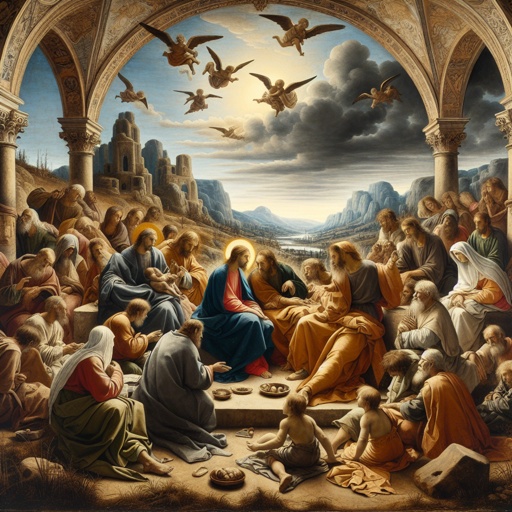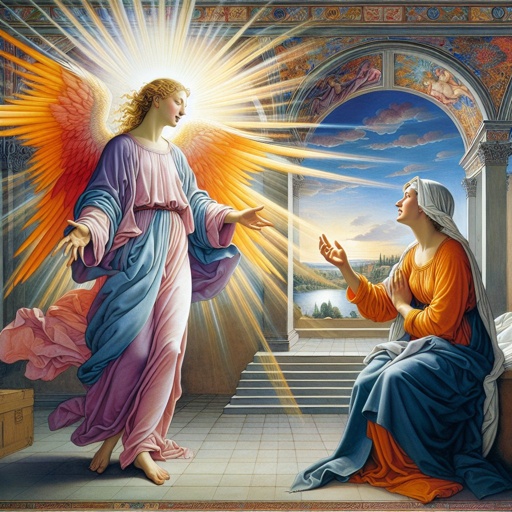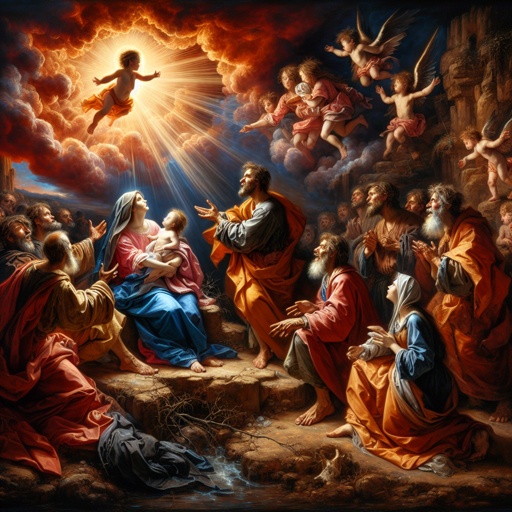What does Luke 1:1 mean?
"Forasmuch as many have taken in hand to set forth in order a declaration of those things which are most surely believed among us," - Luke 1:1

Luke 1:1
The verse Luke 1:1 from the King James Version (KJV) of the Bible reads: "Forasmuch as many have taken in hand to set forth in order a declaration of those things which are most surely believed among us."
This verse serves as the opening statement of the Gospel according to Luke, and it sets the stage for the entire book. Luke, the author of this Gospel, is writing to provide an orderly and accurate account of the life, ministry, death, and resurrection of Jesus Christ. This verse demonstrates Luke's awareness that there were many other accounts of Jesus' life circulating at the time, and he felt compelled to offer an organized and reliable narrative for those who have faith in Christ.
The language in this verse also implies that Luke is aware of the firsthand testimonies of those who have witnessed Jesus' ministry and the impact it has had on them. By referring to "those things which are most surely believed among us," Luke signals that he is drawing from a reservoir of widely accepted truths and beliefs about Jesus and is intent on presenting them in a coherent and methodical manner.
In the broader context of the Gospel according to Luke, this verse points to Luke's careful and methodical approach to his writing. Unlike the other Gospels, Luke stands out for its detailed and investigative approach, which is evident in the meticulous research and attention to historical and cultural details. This verse establishes Luke's credentials as a serious and dedicated chronicler of the life and teachings of Jesus, seeking to offer his readers a reliable and comprehensive account of the events surrounding the birth of Christianity.
One of the key themes in this verse is the importance of accurate and faithful testimony. Luke is keenly aware of the need for an accurate and reliable account of Jesus' life and ministry, particularly in light of the numerous competing narratives that were already in circulation. This theme of trustworthy witness and testimony continues throughout the Gospel of Luke, as Luke pays special attention to the testimonies of those who have encountered Jesus and examines their impact on the spreading of the Christian faith.
Furthermore, the verse also highlights the idea of divine revelation and the importance of preserving and passing on the truths about Jesus. Luke's writing is not just a historical or journalistic endeavor, but also a spiritual and theological one, as he seeks to convey the essential beliefs and teachings of the Christian faith to his readers. His reference to "those things which are most surely believed among us" suggests that these truths are not mere human inventions, but are rooted in divine revelation and the experiences of the early Christian community.
In terms of symbolism, this verse can be seen as a symbol of Luke's commitment to the truth and his dedication to preserving the authentic message of Christianity. The image of setting forth "in order a declaration of those things" conveys the idea of arranging and presenting the essential truths about Jesus in a clear and coherent manner. This symbolizes Luke's desire to provide his readers with a well-organized and trustworthy account of the Christian faith, one that is rooted in the genuine experiences and beliefs of the early Christians.
In conclusion, Luke 1:1 from the King James Version of the Bible serves as an introduction to the Gospel according to Luke, conveying the author's dedication to presenting an accurate and reliable account of the life and teachings of Jesus Christ. The verse touches on themes such as the importance of accurate testimony, divine revelation, and the preservation of essential truths about Jesus. It also symbolizes Luke's commitment to organizing and presenting the Christian message in a clear and coherent manner. Overall, this verse sets the tone for the Gospel of Luke and underscores the author's serious and diligent approach to his writing.
Luke 1:1 Artwork

Luke 1:1

Luke 1:1 - "Forasmuch as many have taken in hand to set forth in order a declaration of those things which are most surely believed among us,"

Luke:1

Luke 1:13

Luke 1:13

Luke 1:25

Luke 1:32

Luke 1:25

Luke 1:39

Luke 1:13

Luke 1:32

Luke 1:13

Luke 1:19

Luke 1:25

Luke 1:32

Luke 1:32

Luke 1:32

Luke 1:25

Luke 1:19

Luke 1:25

Luke 1:19

Luke 1:13

Luke 1:32

Luke 1:32

Luke 24:1

Luke 1:39 - 45

Luke 3:1-6

Luke 1:11-12

Luke 1:54-55

Luke 3:1-6